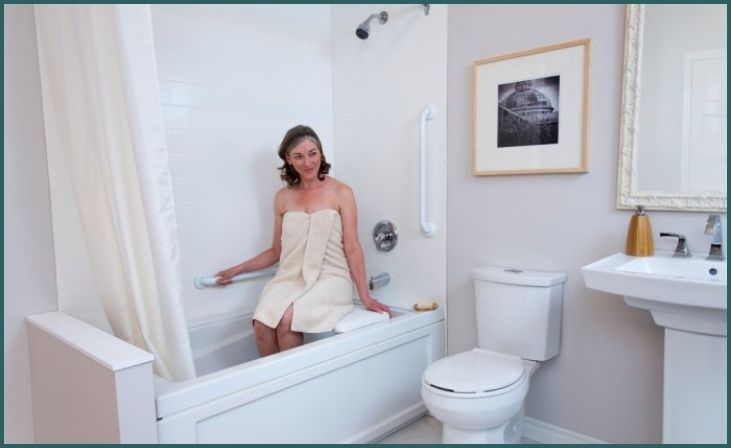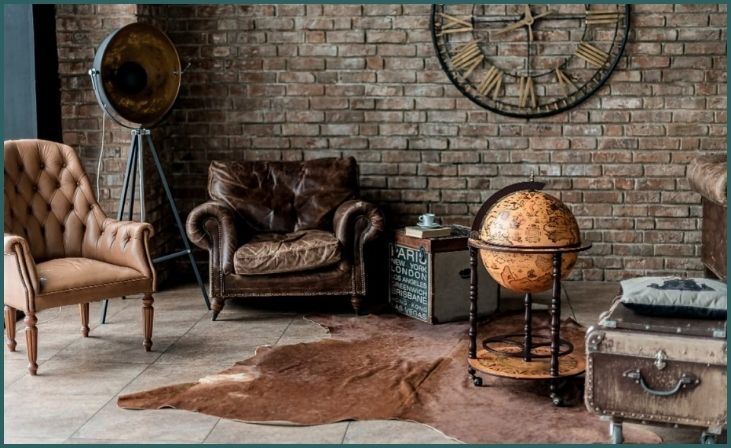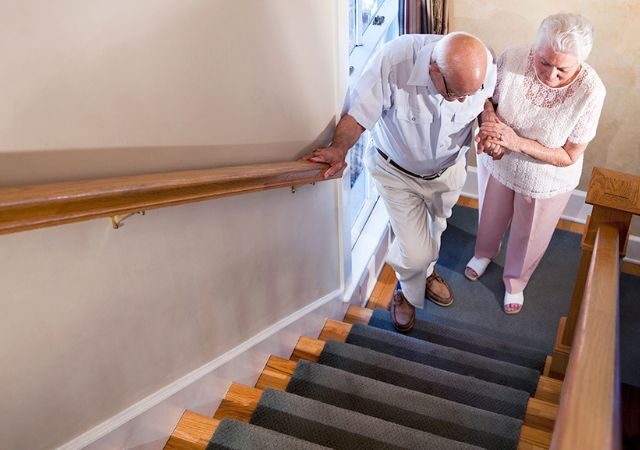Ensuring home safety for elderly individuals is crucial for their well-being and independence. As we age, our physical abilities and cognitive functions may decline, making it essential to create a safe and supportive living environment. This guide provides practical tips to help you make your home safer for elderly loved ones, reducing the risk of accidents and promoting their overall quality of life. Implementing these strategies can provide peace of mind and enhance the comfort and security of seniors living at home.
9 Tips For Improving Home Safety For Elderly Individuals
1. Install Handrails and Grab Bars

Installing handrails and grab bars is one of the most effective methods to improve the safety of older people in their homes. These supports can be strategically placed in areas where falls are most likely, such as in the bathroom near the toilet and inside the shower or bathtub. Stability and a reduction in the danger of falling are provided by handrails that are installed on both sides of stairways. Grab bars should be securely mounted to the wall or floor to ensure they can bear weight. By providing these aids, you give elderly individuals something to hold onto, helping them navigate their homes more safely.
2. Improve Lighting
Proper lighting is essential for preventing accidents and improving visibility in the home. You should ensure that all your house’s sections, including the hallways, stairs, and entryways, have enough lighting. Consider installing motion-sensor lights in key areas to provide illumination without fumbling for switches. Nightlights in the bedroom, bathroom, and hallways can also be beneficial, helping elderly individuals find their way during nighttime trips. The presence of sufficient illumination not only lessens the likelihood of seniors stumbling over obstacles but also helps them feel more safe and confident in their surroundings.
Read Also: 9 Best In-home Care Practices For Elderly Health Management
3. Remove Clutter and Hazards
Clutter and obstacles in the home can pose significant risks for elderly individuals, leading to falls and injuries. Regularly assess and remove any unnecessary items from floors, stairs, and walkways. Ensure that cords from electrical devices are secured and not left lying around, as they can easily be tripped over. Keep frequently used items within easy reach to avoid the need for risky maneuvers like reaching or bending. Maintaining a clutter-free environment creates a safer living space and reduces the chances of accidents occurring.
4. Use Non-Slip Mats and Rugs
Slips and falls may be avoided with the use of non-slip mats and rugs, particularly in places that are prone to wetness. Place non-slip mats in the bathroom, kitchen, and other areas where spills or wet conditions may occur. Rugs should have non-slip backing or be secured with rug pads to prevent them from sliding around. In addition, ensure that any loose or frayed edges on rugs are repaired or removed to avoid tripping hazards. Addressing potential slip risks enhances the safety and stability of surfaces that elderly individuals frequently navigate.
5. Secure Furniture and Appliances

Furniture and appliances should be secured to prevent tipping or movement that could cause injury. Furniture anchors should be used to support things such as bookcases and cabinets, especially those that are tall or heavy. Ensure that appliances are positioned safely and that cords are kept out of the way. In the kitchen, consider installing stove guards or safety knobs to prevent accidental burns or fires. Securing furniture and appliances minimizes the risk of accidents and creates a more stable and predictable environment.
6. Install an Emergency Alert System
An emergency alert system provides elderly individuals with a way to quickly summon help in case of an emergency. These systems can be equipped with wearable devices such as pendants or wristbands that allow users to call for assistance with pressing a button. Some systems also include features like fall detection or automatic alerts to caregivers if a fall is detected. Having an emergency alert system in place ensures that help is readily available, giving seniors and their families peace of mind knowing that assistance is just a button press away.
7. Ensure Safe Bathroom Access
Bathrooms can be particularly hazardous for elderly individuals due to the combination of wet surfaces and slippery floors. To enhance bathroom safety, install a walk-in shower or a shower chair to prevent the need for stepping over a bathtub edge. When you need more assistance, use grab bars or a raised toilet seat that is located near the toilet. Anti-slip mats placed in the shower and on the bathroom floor may also help minimize the likelihood of slipping. By implementing these changes, you will be able to create a bathroom environment that is not only safer but also more accessible, which will cater to the requirements of older consumers.
8. Maintain a Safe Temperature
Temperature control is important for the comfort and safety of elderly individuals. Ensure that the home is kept at a comfortable temperature, avoiding extremes that could lead to heat stress or hypothermia. Use thermostats and space heaters carefully, and ensure they are installed correctly and regularly. Additionally, install smoke and carbon monoxide detectors with functioning batteries to alert residents of dangerous conditions. By regulating the home’s temperature and ensuring proper detection systems are in place, you help prevent health risks associated with temperature extremes and hazardous fumes.
9. Regularly Review and Update Safety Measures

Home safety is an ongoing process that requires regular review and updates. Periodically assess the home environment for new hazards or changes in the needs of elderly individuals. Address any issues promptly and stay informed about new safety products or technologies that could enhance home safety. Engage elderly individuals in discussions about their safety needs and preferences and make adjustments as necessary. By continually reviewing and updating safety measures, you ensure that the home remains safe and supportive as needs evolve.
Read Also:- Best 10 Nutrition Tips for Elderly In Home Care
Conclusion
Enhancing the safety of older people in their homes is critical to ensuring their health and ensuring that they have peace of mind. By implementing these nine tips—installing handrails and grab bars, improving lighting, removing clutter, using non-slip mats, securing furniture and appliances, installing an emergency alert system, ensuring safe bathroom access, maintaining a safe temperature, and regularly reviewing safety measures—you can significantly reduce the risk of accidents and create a more secure living environment. Prioritizing safety not only protects elderly individuals from harm but also fosters a more comfortable and supportive home.
FAQs
What are some common home safety hazards for elderly individuals?
Slippery flooring, poor lighting, congested passageways, unstable furniture, and a lack of restroom assistance are all common risks. Addressing these issues through proper modifications and regular maintenance can greatly reduce the risk of accidents.
How can I make my bathroom safer for an elderly person?
To make a bathroom safer, install grab bars, use non-slip mats, consider a walk-in shower or shower chair, and add a raised toilet seat. Ensure that the bathroom is well-lit and free of clutter to prevent falls.



